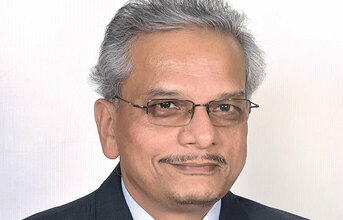
The Indian government recently introduced a production-linked incentive (PLI) scheme for toy manufacturers. How beneficial is it proving for the industry? Are there any specific government policies, initiatives, or incentives that you believe should be in place to support the growth of the ODM model in India?
The industry is still awaiting the announcement of the Production-Linked Incentive (PLI) scheme for toy manufacturing, which has been in the making for almost two years now. Surely, the scheme is much called for, not just from an industry perspective, but also from a socio-economic angle. We strongly believe that PLI should also focus on job creation, a sector where toy manufacturing excels. For instance, for every $10 million of revenue from toy sales, is estimated to generate 1,000 direct jobs in the industry.
Just imagine the number of jobs that can be created by encouraging toy manufacturing in India through incentives such as PLI. As for incentivising ODM, it can perhaps be a part and parcel of the PLI scheme. Alternatively, an innovation fund could be established to encourage innovation, product design, and the industrialisation of toy products.
How is Industry 4.0 revolutionising toy manufacturing in India?
At Aequs, we consider toy manufacturing as a confluence of art and science. While it is still in the early stages of large-scale deployment of Industry 4.0 concepts for manufacturing toys in India, it will be a reality sooner than later. Aequs is at the forefront of this in the industry.
However, we are mindful of the fact that toy manufacturing plays a crucial role in generating large scale jobs, and thus, the technologies we implement are designed to complement our workforce, not replace it.
For example, Aequs is among the first in the industry in India to implement large-format digital printing. This technology helps execute intricate designs that can be challenging for humans to carry out. Additionally, all our production lines are equipped with sensors that track workflow and enhance input management.
Additive manufacturing, an integral part of Industry 4.0, is used for concept design, rapid prototyping of new toys, and testing concepts with end customers. Digital Twin technology is also being developed by manufacturers in India to understand machine behaviour and health.
Aequs has integrated both additive manufacturing and digital twins into its product design and development initiatives and factories.
What are the key advantages that India possesses over China in terms of toy manufacturing?
The Indian toy industry is more cost-effective than China, primarily due to lower labour costs, which amount to a fraction of the latter. The average labour cost in India is just 92 cents per hour, while in China, it is nearly $4 per hour.
However, government incentives can skew the equation, as manufacturing units in the hinterland of China tend to benefit from lower labour costs. On the other hand, India possesses a large pool of engineering talent, which is a significant advantage. In addition, intellectual property protection in India is much stronger compared to China, which is a major advantage. This has boosted the confidence of multinational brands in doing business in India.
According to a joint report by industry bodies FICCI and KPMG, the Indian toy market is expected to double to $2 billion by 2024-25. What are the factors/ measures contributing to growth in this sector?
For starters, global brands view India as a lucrative market for growth, given its low market penetration and increasing purchasing power. Several new brands are entering the Indian market, while a few retail toy chains are expanding their networks in the country.
Secondly, OEMs are looking to de-risk and diversify supply chains from production centres like China. Indian companies like Aequs have proved their mettle as successful contract manufacturers, producing toys for global brands and are now ready to scale up. Some portions of these capacities are likely to be tailored to meet the demands of the Indian market with products variations. For instance, Aequs is seeing a strong interest from brands seeking to manufacture toys for the Indian market, and the DTA units at the KTC are witnessing increased business in this direction.
There are certain electronic components that can be only imported from China or Vietnam since they are not manufactured in India. And these imported parts come with higher duties. What can be an immediate solution to this problem?
Indian EMS (Electronic Manufacturing Services) industry needs support to invest in equipment and facilities. We may need a smooth phase-in of local electronic components and phase-out of imports over the next 2 years. This should also be applied to duties on imports.


























